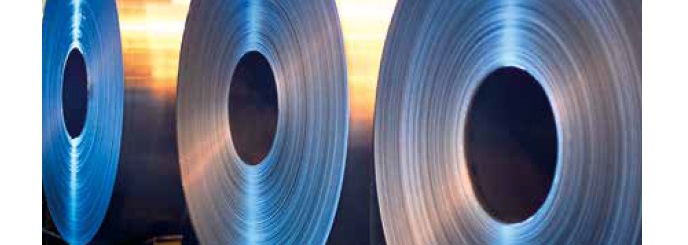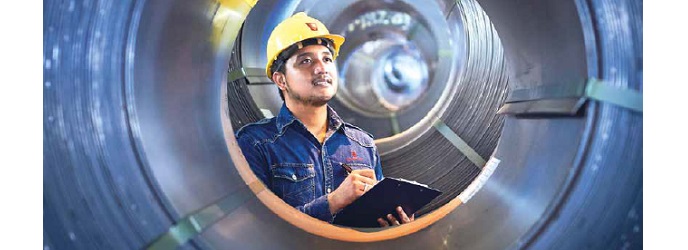Steel Industry Indonesia: Infrastructure Projects & China Production Cuts
After a three-year slowdown, the steel industry of Indonesia is showing some positive developments supported by government-led infrastructure projects in Indonesia and the rising global steel price. The price for (benchmark) hot rolled coil has surged 47 percent since the start of 2016 to USD $485 per ton (May 2016 delivery). In late 2015 the price of hot rolled coil was as low as USD $265 per ton. Moreover, the mandatory usage of locally-manufactured steel for the infrastructure projects will have a positive impact on Indonesia's steel industry.
Hidayat Triseputro, Executive Director of the Indonesian Iron and Steel Industry Association (IISIA), expects the year 2016 to become a good year for the steel industry, especially given the Indonesian government remains committed to its push for infrastructure development across the Indonesian archipelago with IDR 213 trillion (approx. USD $15.8 billion) allocated to infrastructure development in the 2016 State Budget. Sales in Indonesia's steel industry are estimated to expand in the range of 3.5 and 7 percent to 14.5 - 15 million tons this year. Meanwhile, due to the mandatory usage of locally-manufactured steel for government-led infrastructure development, domestic steel manufacturers are expected to supply 50 percent of Indonesia's total steel demand in 2016 (up from 40 percent one year earlier). This would imply that utilization of Indonesia's installed steel production capacity (currently around 9 million tons per year) would rise to 80 percent.
The Industry Ministry policy that forces developers of the government-led infrastructure projects to use at least 40 percent of domestically-produced steel in their projects has already had an impact. According to the latest data from Statistics Indonesia (BPS), imports of iron and steel fell 19 percent (y/y) to USD $1 billion in April 2016, implying that the country's steel needs are increasingly being met by domestic steel supplies.

Meanwhile, the global steel prices are expected to remain climbing on the back of curtailed steel output in China, the world's largest steel manufacturer. China decided to cut its annual installed steel production capacity by 100 million tons over the next five years in an effort to combat the country's steel oversupply.
According to data from ME Steel, the global steel price touched its highest level in July 2008 at USD $1,130 per ton. However, it touched its lowest level in December 2015 at USD $265 per ton brought about by the chronic steel oversupply in China. China's installed production capacity is estimated at 874 million ton per year, while its sales stand at 673 million tons, implying some 200 million tons of steel need to be 'dumped' on the global market. This has put severe downward pressure on international steel prices. Over the past couple of years Indonesian developers preferred to import steel from China, not only due to the cheaper price but also because steel produced in China is considered to be of better quality compared to steel that is manufactured in Indonesia. Currently, Indonesia still imports around 6 to 7 million tons of steel each year.
Earlier, US-based investment bank Morgan Stanley already expressed its view that the year 2016 will be a good one for the steel industry, particularly due to China's intention to curb its steel production capacity, resulting in the higher steel price in the first quarter of 2016.

Indonesian steel-makers that are listed on the Indonesia Stock Exchange are Krakatau Steel, Jaya Pari Steel, Steel Pipe Industry of Indonesia, Saranacentral Bajatama, Gunawan Dianjaya Steel, and Jakarta Kyoei Steel.
The largest among Indonesia's steel manufacturers is Krakatau Steel. Originally this was a 100 percent state-owned company. However, in 2010 it sold a 20 percent stake through an initial public offering (IPO) on the Indonesia Stock Exchange. In the first quarter of 2016, Krakatau Steel's steel sales rose 32.3 percent (y/y) - in terms of volume - to 572,540 tons from the same period one year earlier, supported by the nation's infrastructure projects. However, its revenue fell 12 percent (y/y) to USD $311 million in Q1-2016 as steel prices remained below levels seen in Q1-2015.
